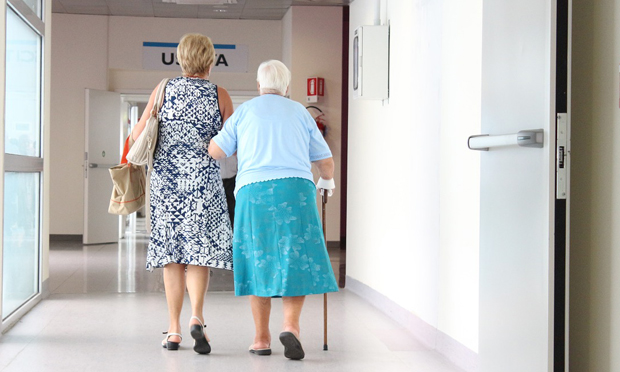U.S. emergency rooms are failing to identify elder abuse, a new study suggests.
The issue: Elder abuse is a serious problem worldwide. In the United States, an estimated 1 out of 10 people ages 60 and older who live at home experience elder abuse, according to the U.S. Centers for Disease Control and Prevention (CDC). Many senior citizens, however, never report the fact that they have been physically or sexually abused, neglected, exploited or otherwise mistreated.
As America’s elderly population continues to grow, a host of state and federal laws aim to prevent abuse, including the Older Americans Act Reauthorization Act of 2016. The new law expands on the original Older Americans Act of 1965, partly by strengthening elder abuse screening and prevention efforts.
Meanwhile, researchers are working to better understand the problem and find better ways to detect and track abuse. A 2017 study published in The Lancet Global Health provides a new estimate for the global prevalence of elder abuse — 15.7 percent, meaning that about 1 in 6 older adults worldwide experience abuse.
An academic study worth reading: “Diagnosis of Elder Abuse in U.S. Emergency Departments,” published in the Journal of the American Geriatrics Society, 2017.
Study summary: A team of researchers from several medical schools sought to determine how often hospital emergency rooms, which are important sites for identifying different kinds of abuse, are diagnosing elderly patients with abuse. The team analyzed data from the Nationwide Emergency Department Sample, a nationally representative database compiled by the U.S. Agency for Healthcare Research and Quality. The researchers looked at the diagnoses given to patients aged 60 and older during 6.7 million emergency room visits in 2012.
Key takeaways:
- Older individuals are diagnosed with elder abuse during fewer than 0.02 percent of emergency room visits.
- The authors suggest this proportion should be higher considering the estimated prevalence of elder abuse nationally is as high as 10 percent. The findings of this study “expose, on a national level, the failure of U.S. EDs [Emergency Departments] to address a major public health problem. Efforts to improve the identification of elder abuse among ED patients and to link these people to effective interventions are needed.”
- Physical abuse and neglect were the most common elder abuse diagnoses.
- Women were more likely than men to be diagnosed with elderly abuse. Nearly 74 percent of emergency room visits resulting in an abuse diagnosis involved elderly women.
- Individuals from the lowest income category were most likely to be diagnosed with abuse. Almost 37 percent of elderly abuse diagnoses went to people with annual incomes below $39,000.
Other resources for journalists:
- The CDC offers various reports on elder abuse, including an “Understanding Elder Abuse” fact sheet.
- The National Institute on Aging, a federal agency that’s part of the National Institutes of Health, researches a broad range of issues associated with growing older.
- The Center of Excellence on Elder Abuse and Neglect, based at the University of California, Irvine School of Medicine, provides training and technical assistance to physicians, law enforcement officers and others.
- Some elderly advocacy groups include the National Adult Protective Services Association and the National Clearinghouse on Abuse in Later Life.
Related research:
- A 2015 report from the U.S. Department of Health and Human Services, “A Profile of Older Americans: 2015,” provides a detailed look at America’s elderly with population projections through 2060.
- A 2015 study published in the Journal of the American Geriatrics Society, “Prevalence of and Risk factors for Elder Abuse and Neglect in the Community: A Population-Based Study,” looks at elder abuse in New York.
- A 2014 report from the U.S. Department of Justice, “Crimes Against the Elderly, 2003–2013,” offers details on crimes affecting individuals age 65 or older.


Expert Commentary